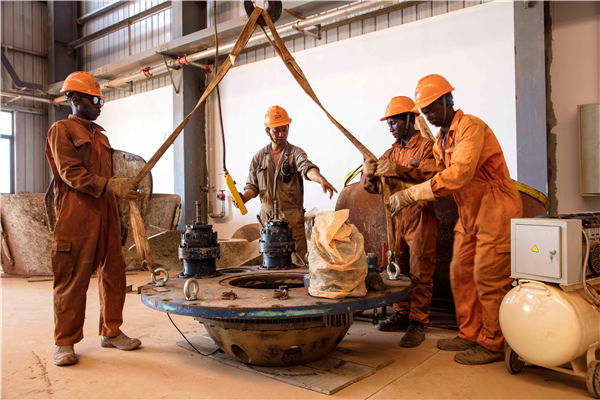Belt and Road opens new path for Guinea
Guinea, located on the western Atlantic coast with 300 km coastline, offers enormous potential for the establishment of a multifaceted partnership with China, thus serving as a new corridor for Chinese trade in Africa.
By Keita Moussa
The Belt and Road Initiative is a massive project that encompasses three continents and affects more than half of the world's population. It is on the sea routes that this project touches Africa by its horn, including Kenya, the Somali and Djiboutian coastlines. Geographically, the Horn of Africa serves as the gateway to the project in Africa. It is a timely initiative, since China became Africa's largest trading partner in 2009, with total trade worth US$91 billion.

The initiative is a crucial opportunity to bridge the gap of rapid flow. Through this project, China is deploying financial resources for large-scale infrastructure projects across the continent. The Djibouti-Addis Ababa railway line and the Nairobi-Mombassa highway are two successful examples of Sino-African intra-African development cooperation.
Guinea, located on the western Atlantic coast with 300 km coastline, offers enormous potential for the establishment of a multifaceted partnership with China, thus serving as a new corridor for Chinese trade in Africa. In the west is Djibouti and in the east is Ethiopia. From a historical point of view, Guinea is the first sub-Saharan country to establish diplomatic relations and its President Ahmed Sekou was one of the first African leaders to be received by President Mao Zedong with all the honors worthy of a host president.
From the point of view of history Guinea and China have been cooperating in various forms from early years. In the 2000s trade became considerable with the volume of imports of Chinese goods reaching US$175 million in 2006.
The new Guinean authorities installed in the Sekhoutereya Palace since 2010, under the chairmanship of Pr Alpha Condé, intend to focus on Sino-Guinean cooperation to meet several challenges. First is the energy front. For the last eight years, in partnership with China, many dams have been under construction, one of which was completed in 2015. This is the Kaleta dam, which was constructed at the cost of US$440 million, with China financing 75 percent. Souapiti with a cost of US$1.3 billion is 85 percent financed by China. The Amaria dam, in which China is a stakeholder, saw groundbreaking ceremony. It is on the energy front that honor is largely due to Sino-Guinean cooperation based on the concrete.
In the field of transport, China favors the rebuilding of international transport routes across the continent, the aim of which is to facilitate an increasing and rapid access of Chinese products as well as to revitalize rural economies across the continent. One of the largest road construction projects was launched this year by Guinean in partnership with China. It is the national road number one. Over a distance of 357 km the China Road and Bridge Construction Company has promised to complete this vital route to the country's economy within 33 months. The construction of this road would quickly link Bamako, the capital of Mali, and will contribute to the improvement of flows within the country.
The Belt and Road Initiative is the largest historic agreement ever made by Guinean on September 5, 2017, in the presence of Guinean and Chinese heads of state, a US$20 billion project financing agreement; it is a deal of the century for Guinea.
The author is an undergraduate student at Institute of African Studies, Zhejiang Normal University.

